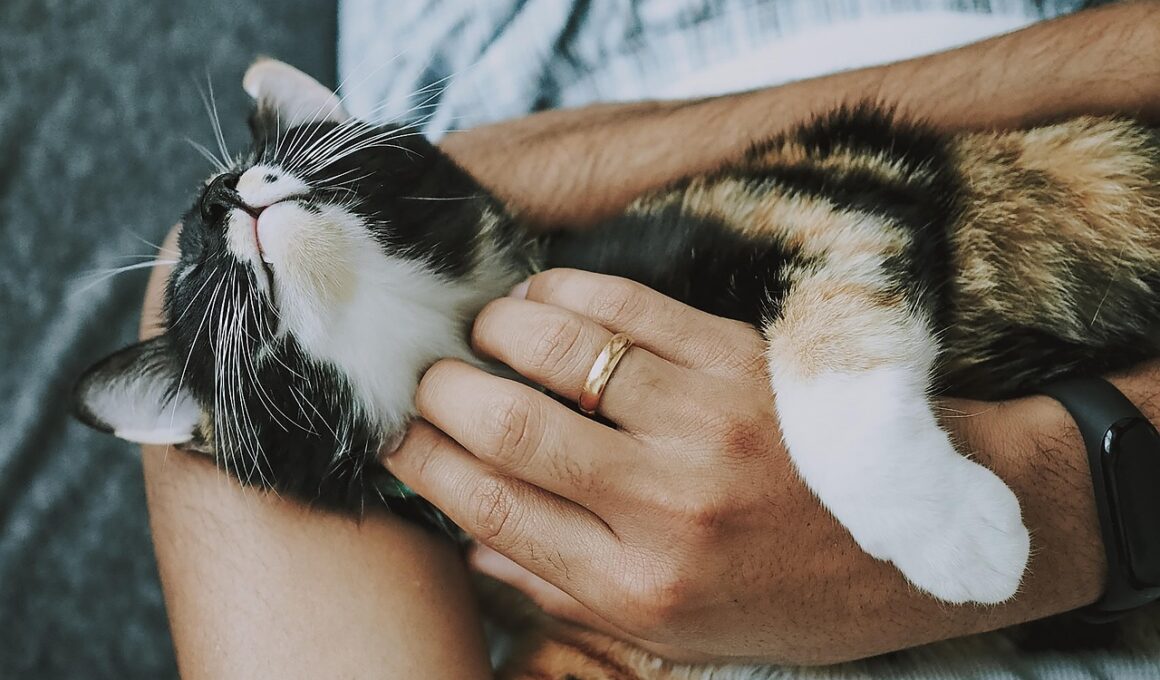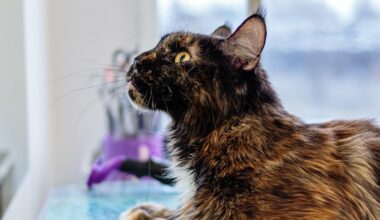Disaster Relief and Cat Rescue: Collaborative Efforts Save Lives
When disaster strikes, the impact can be devastating, not only for humans but also for animals. Many cat rescue organizations come together to provide relief and safe havens for felines affected by natural disasters. These collaborative efforts can involve local, national, and even international agencies working in unison. When storms, wildfires, or floods occur, the need for rapid response becomes paramount. Cats often become displaced, injured, or stranded in perilous conditions. Organizations actively coordinate resources, volunteer bases, and emergency shelters to ensure the well-being of these vital companions. Many times, communities rally together to support these initiatives, showcasing the bond between humans and animals. Dedicated volunteers are often the unsung heroes in these rescue missions, sacrificing their time and effort to save lives. Furthermore, proper training and preparedness play significant roles in successful animal rescues during disasters. By building connections with local animal control and shelter organizations, rescue groups can streamline their efforts, providing timely assistance. The process usually requires meticulous planning and continuous communication to maximize efficiency and minimize the well-being of the animals involved.
Moreover, fundraising efforts become essential in supporting these rescue initiatives. Many organizations rely on donations to maintain operations and cover expenses incurred during disasters. Options for funding can include crowdfunding campaigns, local events, and partnerships with businesses committed to animal welfare. These resources help ensure teams have necessary supplies such as food, medical care, and temporary housing solutions. Support networks can consist of veterinarians and animal behaviorists who volunteer their expertise during crises. This collaboration between groups creates a safety net for cats in distress, resulting in a broader impact. Raising awareness among the public about the needs of animals during disasters helps promote preparedness. Educational campaigns can teach pet owners about evacuation plans that include their pets and the resources available for their care. Some communities hold workshops or seminars on emergency preparedness, emphasizing critical steps to take when faced with natural disasters. Therefore, it’s crucial that families understand their responsibilities as pet owners during these difficult times. An organized approach allows not just for effective interventions, but also fosters compassion towards those who cannot voice their needs.
Case Studies: Successful Cat Rescues
Numerous examples illustrate the success of collaborative efforts in cat rescue during disasters. For instance, numerous organizations rallied during Hurricane Katrina to save thousands of animals left behind by evacuating households. Teams, such as Best Friends Animal Society, worked tirelessly to recover and shelter cats until they could be reunited with their owners. Additionally, in California, various cat rescues banded together during the numerous wildfires to save trapped and displaced cats. They established triage centers, providing immediate veterinary assistance as well as a safe space for the animals. These quick actions not only aided in the rescue of thousands but also raised awareness regarding the impact of wildfires on domestic animals. Each successful rescue not only serves as a testament to the collaborative spirit but emphasizes the importance of spaying and neutering, fostering public awareness about responsible pet ownership. Preparing a pet-friendly evacuation kit became a crucial lesson for families living in disaster-prone areas. These testimonies highlight resilient human-animal relationships, showcasing that compassion and cooperation truly save lives during catastrophic events that affect beloved felines.
Furthermore, public participation in these rescue missions often makes a significant difference. Communities often engage with organizations through volunteer opportunities and animal fostering programs. Opening homes to animals in need allows rescue groups to free space and provide care for those affected by disasters. Many foster families provide critical support, as the influx of rescues can overwhelm shelters and increase the demand for temporary housing. Animals receive necessary attention and care during fostering, improving their chances of recovery. The collective effort extends beyond immediate response, creating long-term solutions for the animals’ future. A sense of community emerges as individuals come together with a shared goal of protecting and safeguarding vulnerable animals in need. Online platforms facilitate outreach, allowing people to connect, share experiences, and gather resources easily. Advocating for the welfare of stray and abandoned animals reinforces the commitment to providing them with safe environments. In facing adversity, connections among people and animals deepen, fueling a continued drive to support rescue efforts. Ultimately, the collaborative spirit becomes a lifeline for cats in perilous situations during crises that threaten their survival.
Adopting and Rehabilitating Rescued Cats
After a successful rescue operation, the next phase focuses on rehabilitation and adoption for the rescued cats. Many animals experience trauma during disasters, requiring thoughtful approaches to support their mental and physical health. Professional trainers, behaviorists, and veterinarians play critical roles in this process. The careful evaluation of each cat’s needs ensures appropriate care and treatment is provided before adopting them into new homes. Creating safe, loving environments for the cats encourages better socialization and healing. Throughout this phase, many organizations rely on foster volunteers who provide temporary homes while working towards permanent placements. Fostering allows time for recovery and assessment, ensuring each cat finds the right forever home. Public adoption events foster connections between potential adopters and cats in need of homes. These engagement opportunities create excitement and increase the likelihood of successfully placing cats into loving families. Moreover, proper follow-up care is essential once cats are adopted, ensuring ongoing support as they transition into their new lives. The process emphasizes the responsibility pet owners have towards their adopted animals, ultimately leading to decreased abandonment rates in future disasters.
In conclusion, the collaborative efforts in disaster relief and cat rescue significantly impact the lives of many felines in need. By combining expertise, resources, and passion, various organizations and individuals come together as advocates for these animals. As communities unite to respond effectively during disasters, they create a strong network of care and compassion that spreads beyond immediate rescues. Educating pet owners and raising awareness about the importance of emergency preparedness serve as preventative measures to protect domestic animals. Continued support also contributes to understanding the broader implications of animal welfare in disasters. This knowledge encourages responsible pet ownership and inspires future disaster management protocols that prioritize rescue and recovery efforts. Through successful case studies, communities see the real impact of individual actions and collective responses in protecting vulnerable cats. The journey for rescue animals extends beyond initial rescue efforts, promoting the significance of rehabilitation and adoption. Ultimately, engaging in collaborative efforts strengthens relationships between humans and animals, highlighting the resilience found within our shared experiences and experiences during life’s most challenging moments.
As we reflect on these successful collaborations and efforts, it’s imperative to encourage ongoing vigilance regarding animal welfare in future disaster scenarios. Knowledge sharing will empower both individuals and organizations to enhance practices for safety and care. By adhering to these collaborative principles, we can create lasting change in how we respond to the needs of our companion animals during crisis. Promoting legislative initiatives that protect animals’ rights during disasters helps solidify the commitment to safeguarding feline lives. This ongoing advocacy remains necessary as society navigates the unpredictable realm of natural disasters. Through education, community support, and resilience, we can foster a world more empathetic to the needs of animals in their most challenging times. Supporting local rescues and disaster preparedness organizations promotes a foundation for future efforts, ensuring felines in crisis receive timely assistance. As challenges arise, so must our dedication to championing the causes of these animals and acknowledging the vital role they play in our lives. Collective action can lead to transformative approaches to disaster prevention and rescue operations that ultimately celebrate both human and feline survival.
This unwavering commitment to cat rescue during disasters underscores the importance of compassion and community involvement. Proactive engagement is essential to ensure that animals receive the help they need when they need it most. The journey of a cat rescued from disaster not only highlights the fragility of their existence but also the strength of the human-animal bond. Together, we can advocate and build a better future for all cats in our communities. Embracing responsible ownership, proactive awareness, and collaboration offers hope for a resilient partnership between humans and their feline friends. Ultimately, ongoing efforts to improve how we approach animal rescue and welfare will create meaningful change, fostering an ethical stance toward all living beings. When calamities unfold, our ability to respond with empathy is vital — for all creatures affected by such situations. Let us ensure that across the globe, no cat is left behind in their times of need. Through continued advocacy, we can create a future enriched by compassion for cats, ensuring that each life saved brings us one step closer to a brighter tomorrow.


